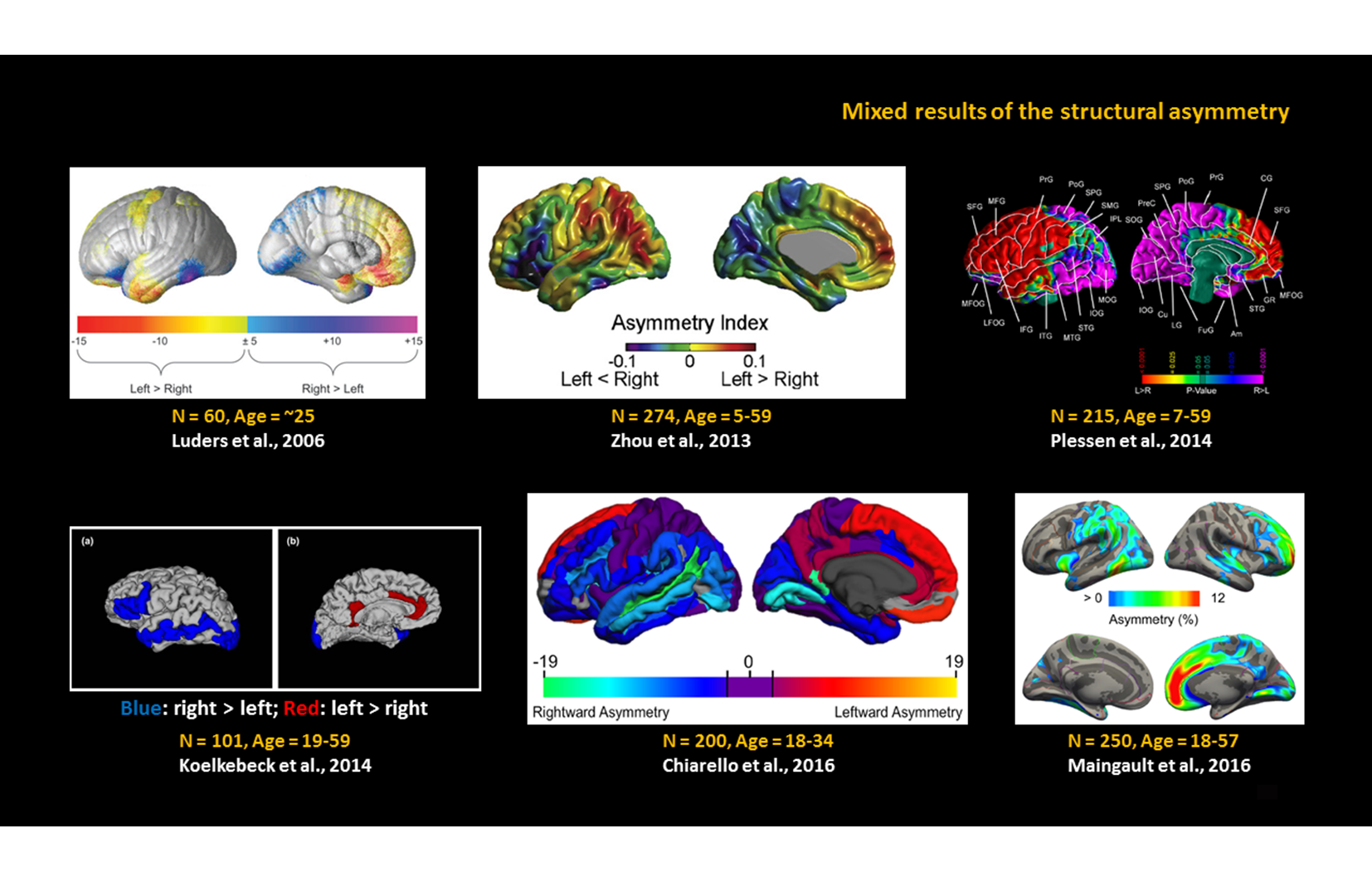
Mapping Cortical Asymmetry in 17,141 Healthy Individuals Worldwide via the ENIGMA Consortium
Hemispheric asymmetry is a cardinal feature of human brain organization. Abnormal brain asymmetry is also linked to numerous cognitive and neuropsychiatric disorders. Here we present the largest ever analysis of brain asymmetry and its variability across individuals (N = 17141). Results revealed widespread asymmetries at both hemispheric and regional levels. In addition to population-level asymmetries, variability in the brain asymmetry was found related to sex, age, and brain size. Surprisingly, we did not find significant associations between asymmetries and handedness. Finally, with two independent pedigree datasets, we found several asymmetries showing considerable heritability. This study provides a reference normative resource for future studies of altered brain asymmetry in cognitive, neurological, and psychiatric disorders, and the genetic basis of brain asymmetry.
We present summary statistic results from the ENIGMA Lateralization Working Group. This site will help researchers to query the results by specifying Cortical Measures, Regions of Interest, and Effects of Interest.
This work has been published in PNAS. Summary statistics from the meta-analyses are available in the Supporting Information of this paper. Scripts and summary statistics are also available Here, and also from The Language Archive, a public data archive hosted by the Max Planck Institute for Psycholinguistics.
Kong, X., Mathias, S. R., Guadalupe, T., ENIGMA Laterality Working Group, Glahn, D. C., Franke, B., Crivello, F., Tzourio-Mazoyer, N., Fisher, S. E., Thompson, P. M., & Francks, C. (2018). Mapping Cortical Brain Asymmetry in 17,141 Healthy Individuals Worldwide via the ENIGMA Consortium. Proceedings of the National Academy of Sciences of the United States of America. Advance online publication. doi:10.1073/pnas.1718418115 (PDF).
The image by default on the right shows an overview of mixed results of cortical thickness asymmetry in published papers with relatively small sample sizes (N < 300).
